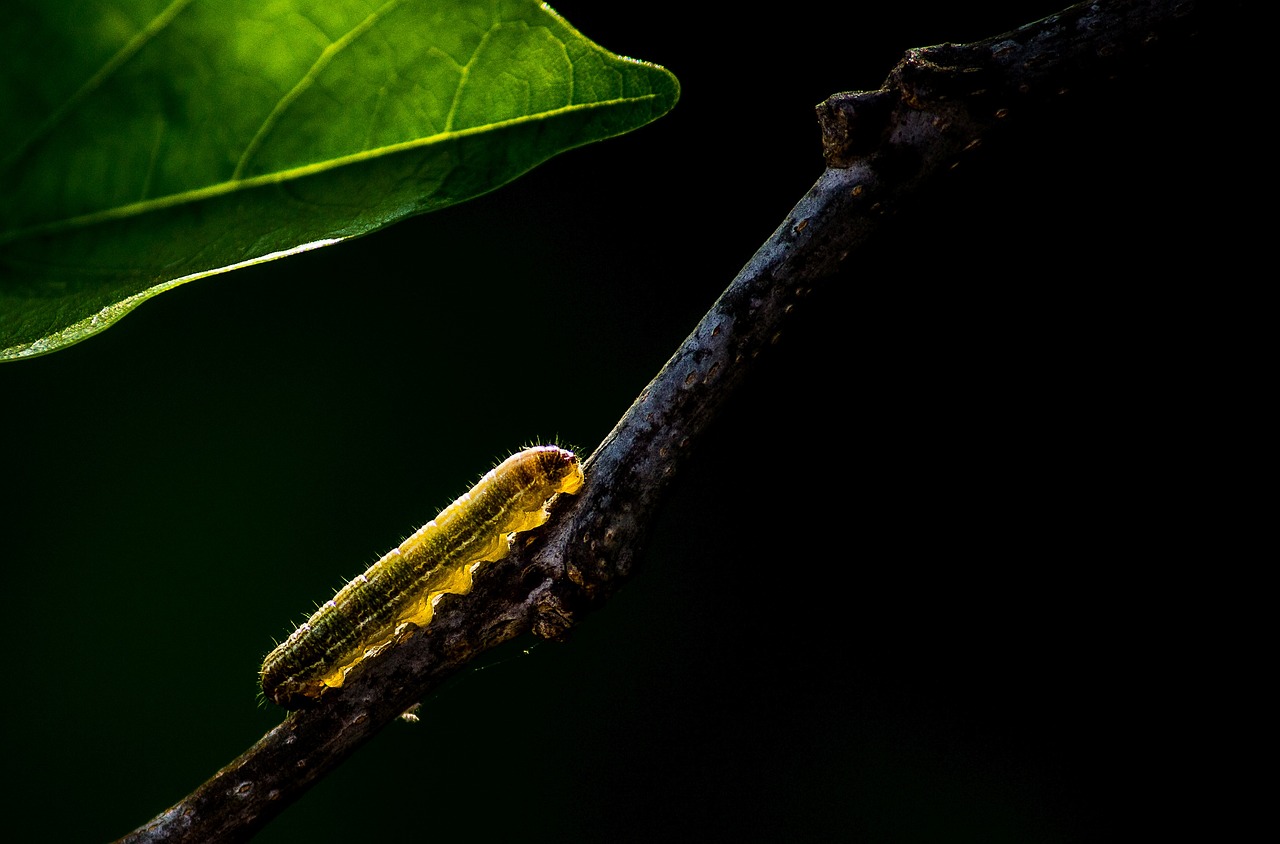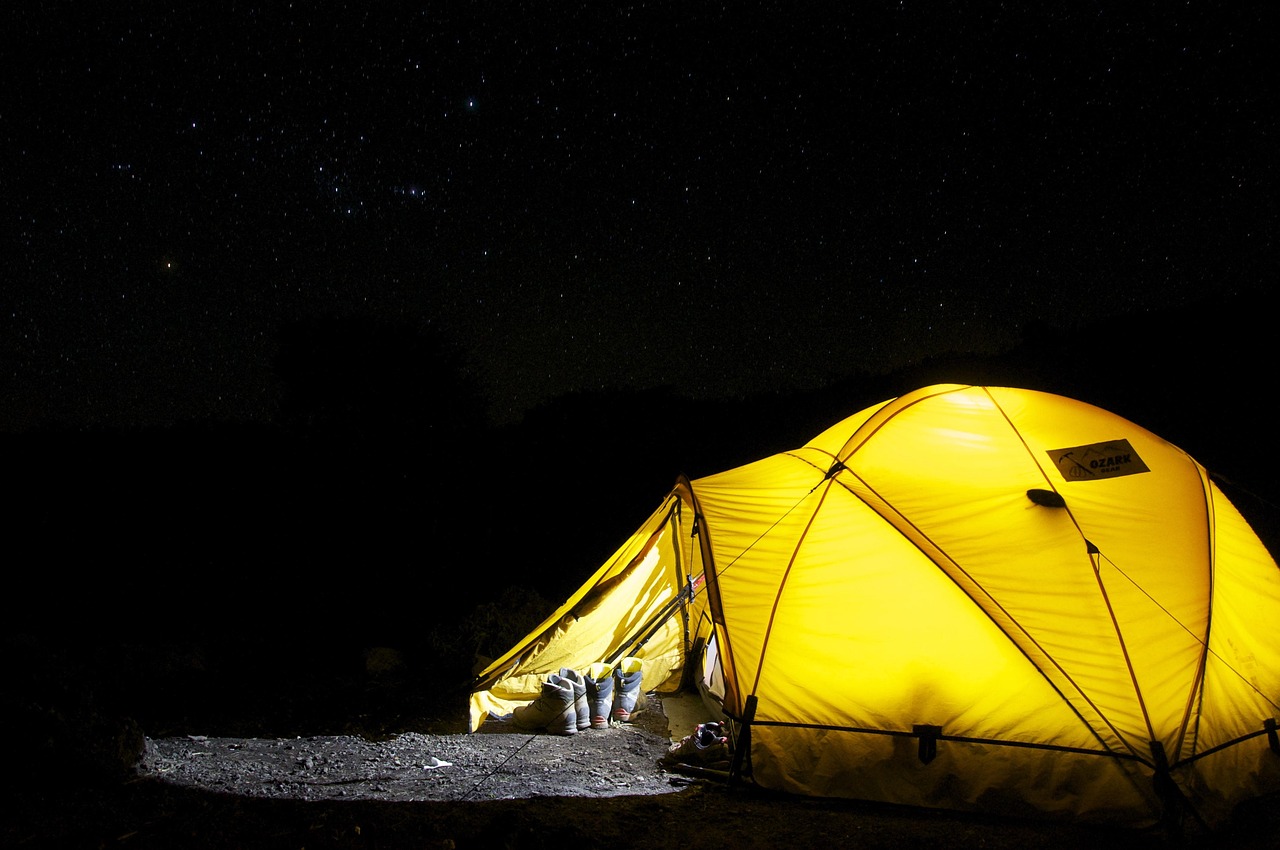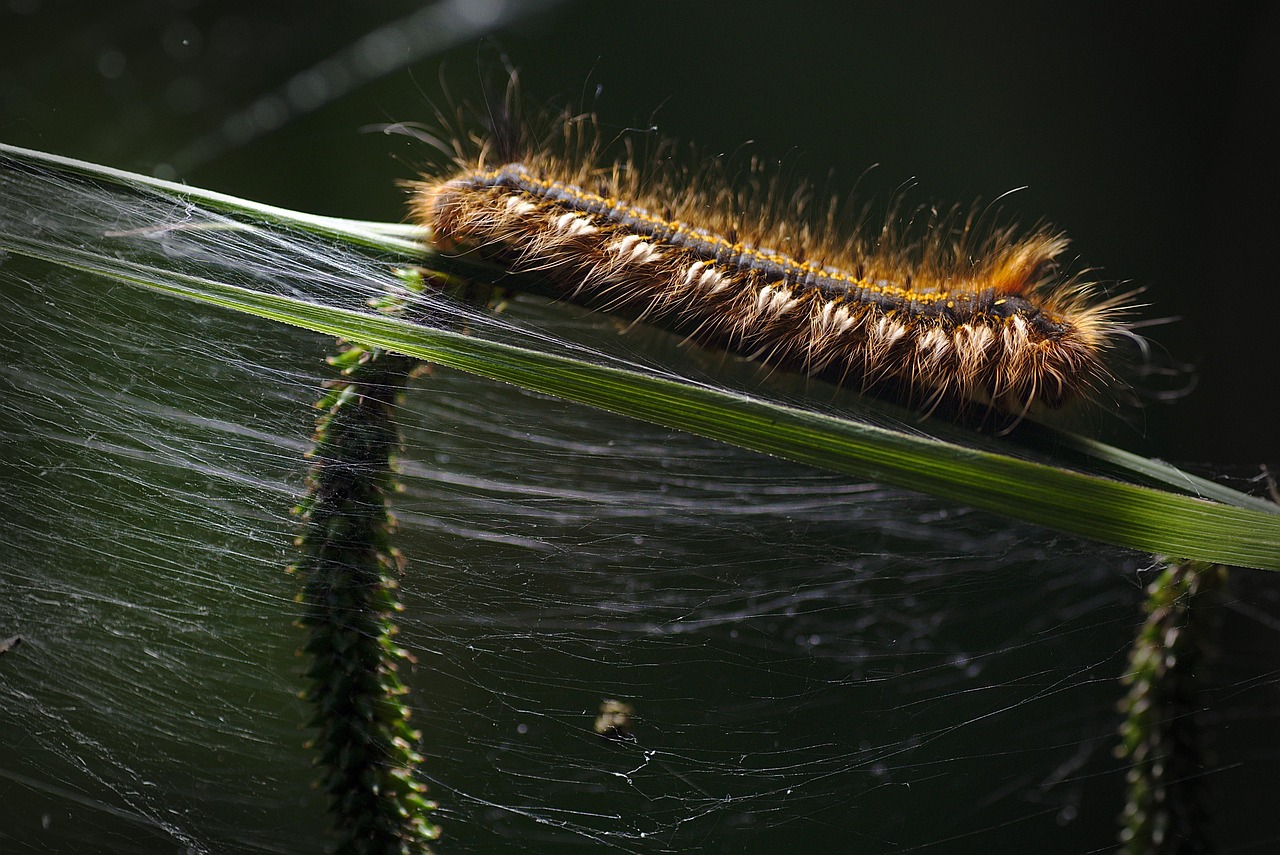Tent caterpillars can quickly become a nuisance for gardeners and homeowners. These invasive pests, known for their distinctive webs in trees, can cause significant damage to foliage and disrupt the ecosystem. Understanding how to manage and eliminate them is crucial for maintaining a healthy outdoor environment.
Tent caterpillars are the larvae of various species of moths, most notably the Eastern Tent Caterpillar. They thrive in warm climates and are often found in deciduous trees such as cherry, apple, and oak. Their presence is marked by the formation of silk tents in the branches, where they gather and feed. This feeding behavior can lead to defoliation, weakening trees and making them more susceptible to disease.

The life cycle of tent caterpillars consists of several stages: egg, larva (caterpillar), pupa, and adult moth. Understanding these stages is essential for effective control measures. The following table summarizes the key stages of the tent caterpillar life cycle:
| Life Cycle Stage | Duration | Description |
|---|---|---|
| Egg | Spring | Eggs are laid in clusters on twigs and hatch when temperatures rise. |
| Larva (Caterpillar) | 4-6 weeks | Caterpillars feed on leaves and form silk tents for protection. |
| Pupa | 1-2 weeks | Caterpillars pupate in sheltered areas before emerging as moths. |
| Adult Moth | Summer | Moths emerge to mate and lay eggs, starting the cycle again. |
Identifying Tent Caterpillar Infestation
Recognizing an infestation early can help prevent extensive damage. Look for the following signs:
- Presence of silken webs in tree branches.
- Caterpillars visibly feeding on leaves.
- Defoliation of trees, particularly in spring.
- Clusters of brown eggs on twigs during winter.
Tent caterpillars are generally active during the day. They feed in groups, which makes them easier to spot compared to other pests. Their coloration often varies from light to dark brown with a distinct stripe down their backs, which can help in identification.
Preventing an infestation starts with proper tree care and maintenance. Healthy trees can better withstand caterpillar damage. Here are some preventive measures to consider:
- Regularly inspect your trees for signs of tent caterpillars or their webs.
- Maintain tree health through proper watering and fertilization.
- Encourage natural predators like birds and beneficial insects that feed on caterpillars.
- Avoid over-fertilizing, as this can encourage caterpillar populations.
If you find that tent caterpillars have invaded your trees, it is essential to act quickly. There are several methods available for controlling their populations effectively. In the next sections, we will explore various strategies you can employ to manage and eliminate tent caterpillars, ensuring your landscape remains healthy and vibrant.
Effective Control Methods for Tent Caterpillars
Once you identify a tent caterpillar infestation, taking swift action is critical to mitigate damage. There are several effective control methods available, ranging from natural solutions to chemical treatments. Each method varies in its effectiveness and environmental impact, so it is important to choose the right approach for your situation.
1. Manual Removal
One of the most straightforward methods of controlling tent caterpillars is manual removal. This method is labor-intensive but can be very effective, especially for small infestations.
- Use gloves to protect your hands when handling caterpillars.
- Remove the silk tents by hand or with a rake.
- Dispose of them in a sealed bag to prevent re-infestation.
- Regularly monitor the area to catch any new tents that may appear.
Manual removal is best done in the early morning or late evening when caterpillars are less active. This approach not only removes the pests but also minimizes their impact on the surrounding ecosystem.
2. Natural Predators
Encouraging natural predators is another effective way to manage tent caterpillar populations. Birds, wasps, and certain insects can help control caterpillar numbers.
- Attract birds by installing birdhouses or feeders.
- Plant native flora that attracts beneficial insects like ladybugs and lacewings.
- Avoid using broad-spectrum pesticides that could harm these natural predators.
Creating a diverse garden environment can foster a healthy ecosystem where natural pest control thrives. Promoting beneficial wildlife can reduce the need for chemical interventions.
3. Organic Insecticides
If manual removal and natural predators do not adequately control the infestation, consider using organic insecticides. These products are less harmful to the environment compared to synthetic chemicals.
- Bacillus thuringiensis (Bt): This bacterium is effective against caterpillars. It disrupts their digestive system when ingested.
- Neem oil: Derived from the seeds of the neem tree, this oil disrupts the growth and reproduction of caterpillars.
- Insecticidal soaps: These soaps can suffocate caterpillars and are safe for beneficial insects when used properly.
When applying organic insecticides, always follow the manufacturer’s instructions for dosage and timing. Early evening applications can minimize harm to beneficial insects and maximize effectiveness against caterpillars.
4. Chemical Pesticides
If other methods fail and the infestation is severe, chemical pesticides may be necessary. These should be used as a last resort due to their potential negative impact on the environment and non-target species.
- Select targeted insecticides that specifically mention efficacy against caterpillars.
- Apply during the early stages of caterpillar development for maximum impact.
- Wear protective gear when handling and applying chemical treatments.
It is crucial to follow all safety guidelines and regulations when using chemical pesticides. Always read labels carefully and consider consulting a professional pest control service if unsure about the best approach.
5. Monitoring and Follow-Up
No matter which control method you choose, continuous monitoring is essential. After treatment, regularly check your trees for signs of returning caterpillars or new webs. Implementing an integrated pest management strategy can help ensure long-term success in controlling tent caterpillar populations.
- Keep a journal of your observations to track patterns and effectiveness of treatments.
- Adjust your control methods based on what works best for your specific situation.
- Educate yourself on seasonal changes that may influence caterpillar activity.
By being proactive and responsive, you can protect your trees from tent caterpillar invasions effectively.
Preventative Measures to Avoid Tent Caterpillar Infestations

While dealing with a tent caterpillar invasion can be challenging, preventing one from occurring in the first place is equally important. Implementing proactive measures can help ensure your landscape remains healthy and free from these pests. Here are some effective strategies to consider:

1. Tree Selection and Placement
The choice of trees in your landscape can influence the likelihood of a tent caterpillar infestation. Some species are more susceptible than others. To minimize risk, consider the following:
- Choose Resistant Species: Opt for tree species that are less attractive to tent caterpillars, such as conifers or certain types of hardwoods.
- Avoid Planting Susceptible Trees: Be cautious with trees known to attract tent caterpillars, like cherry, apple, and plum trees.
- Strategic Placement: Plant susceptible trees away from areas where tent caterpillars have previously thrived to reduce the chance of re-infestation.
2. Cultural Practices
Adopting specific cultural practices can also aid in preventing tent caterpillar infestations. These practices focus on maintaining tree health and discouraging pest activity.
- Regular Pruning: Prune trees to improve air circulation and sunlight exposure, making them less hospitable to pests.
- Proper Watering: Ensure trees receive adequate water, particularly during dry spells, to maintain their health and resilience against pests.
- Mulching: Use mulch around the base of trees to suppress weeds and maintain moisture, which supports overall tree health.
3. Seasonal Monitoring
Seasonal monitoring is crucial for detecting early signs of tent caterpillar activity. By keeping a watchful eye throughout the year, you can catch infestations before they escalate.
- Spring Inspections: In early spring, inspect trees for signs of egg masses or newly hatched caterpillars.
- Regular Observations: Check your trees weekly during the growing season for any signs of webbing or caterpillar feeding.
- Record Keeping: Maintain a log of your observations to identify trends over the years and adjust your management strategies accordingly.
4. Community Awareness and Collaboration
Tent caterpillar infestations can impact entire neighborhoods. Engaging with your community can foster a collective approach to managing these pests.
- Community Education: Share information on tent caterpillar identification and control methods with neighbors to raise awareness.
- Coordinated Efforts: Consider organizing community cleanup days to assist in manual removal efforts or to apply preventive measures simultaneously.
- Local Resources: Collaborate with local gardening clubs or extension services for resources and support related to pest management.
5. Environmental Considerations
Understanding the environmental conditions that favor tent caterpillar populations can aid in prevention strategies. Certain factors can make your landscape more appealing to these pests.
- Temperature and Humidity: Tent caterpillars thrive in warmer temperatures and higher humidity levels. Monitor weather patterns that may favor their development.
- Avoid Overcrowding: Ensure that trees are not overcrowded to promote better air circulation. Overcrowded areas can create humid microclimates conducive to pest populations.
- Healthy Ecosystem: Maintain a balanced ecosystem by promoting biodiversity in your garden, which can help control pest populations naturally.
By implementing these preventative measures, you can significantly reduce the risk of tent caterpillar infestations in your landscape, promoting healthier trees and a more vibrant environment.
Additional Considerations for Managing Tent Caterpillars

In addition to the strategies already discussed, there are several other considerations that can enhance your ability to manage and prevent tent caterpillar infestations effectively. These include understanding the role of local wildlife, utilizing technology for monitoring, and seeking professional assistance when necessary.
1. The Role of Local Wildlife
Local wildlife plays a significant role in controlling pest populations, including tent caterpillars. Understanding this relationship can help you create a more balanced ecosystem in your garden.
- Encourage Birds: Birds such as blue jays and chickadees are natural predators of tent caterpillars. Providing bird feeders, baths, and nesting boxes can help attract these beneficial birds to your garden.
- Beneficial Insects: Insects like ladybugs and predatory wasps also help manage caterpillar populations. Planting a variety of flowers can attract these beneficial insects.
- Avoid Harmful Chemicals: The use of broad-spectrum insecticides can harm beneficial wildlife. Instead, focus on targeted pest control methods that spare these important allies.
2. Using Technology for Monitoring
With advancements in technology, monitoring pest populations has become more accessible. Here are some tools you might consider:
- Pest Detection Apps: Utilize smartphone apps designed for gardeners that allow you to document and track pest sightings and treatments.
- Weather Stations: Installing a small weather station can help you monitor temperature and humidity levels, providing data that assists in predicting pest activity.
- Online Resources: Many agricultural extension services provide online tools and resources for identifying pest threats and managing them effectively.
3. Seeking Professional Assistance
If an infestation becomes overwhelming or you feel uncertain about managing the situation, don’t hesitate to seek professional help. Pest control experts can offer tailored solutions based on your specific circumstances.
- Consultation Services: Many local extension offices offer consultation services that provide expert advice on pest management strategies.
- Integrated Pest Management (IPM): Professionals can implement IPM strategies that combine various methods tailored to your landscape.
- Safety and Efficacy: Professionals are trained to handle chemicals safely and effectively, minimizing risks to you and the environment.
Final Thoughts
Tent caterpillars can pose a serious threat to the health of your trees and the overall aesthetics of your landscape. However, with a proactive approach that includes identification, monitoring, and management strategies, you can effectively combat these invasive pests. Understanding their life cycle, employing both preventive measures and control techniques, and leveraging local wildlife are all crucial components in maintaining a resilient garden environment.
By staying informed about tent caterpillar activities and remaining vigilant throughout the seasons, you can ensure that your landscape remains vibrant and healthy. Whether through manual removal, natural predators, organic treatments, or professional assistance, your efforts will contribute significantly to protecting your trees and enhancing the beauty of your outdoor spaces.
Remember that effective pest management is not just about eradication; it is also about fostering a balanced ecosystem that supports healthy plant life and biodiversity. With these insights and strategies in hand, you are well-equipped to tackle any tent caterpillar invasion that may arise in the future.
